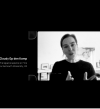Dr Marcella Favale, Senior Research Fellow at CIPPM explores the impact that social media has on pre-teens.
The use of digital platforms by teenagers is a well-documented phenomenon, characterized by two key trends: a significant increase in usage and the associated dangers, which have been addressed by various governments and organizations (OECD 2020; BIK 2020). These studies have also included pre-teens (aged 9 to 12) in their samples, revealing that pre-teens use platforms significantly less than their older counterparts—about 50% less. However, these findings only capture a fraction of the actual online behaviour of tweens and teens, as evidenced by the COX survey, which shows that 95% of tweens go online daily.
The Impact of COVID-19 on Digital Platform Usage
The data mentioned above were collected before the COVID-19 pandemic. During the pandemic, children from a very young age were thrust into a crash course in IT to cope with distance learning. This rapid adaptation has significantly advanced their IT skills and ingrained the use of digital platforms for staying in touch with friends and family. This shift is irreversible, making it reasonable to assume that the use of platforms by pre-teens, even those younger than nine years old, will continue to rise.
Addressing Child Protection in the Digital Age
Child protection has been a focal point in several projects within the realm of criminal law, particularly concerning issues like cyberbullying, sexting, sextortion, and hate speech. However, this research aims to address a less-explored issue: the creation of content by the youngest users of digital platforms. Surveys, such as those by Pew (2018), indicate that the most popular applications among young users are YouTube, Instagram, and Snapchat. More recent studies have included apps like TikTok and messaging apps like WhatsApp, whose distinction from social media is increasingly blurred, and whose popularity is soaring (MessengerPeople 2020).
Copyright Concerns and Legal Accountability
All these apps enable users to create short videos or pictures to share within a private circle or the broader community of users. This content is protected by copyright, but who owns these rights? A review of the Terms of Use of these apps reveals that users must relinquish a significant amount of economic rights to the platform owner, who can share, modify, delete, etc., any content created by the user.
Even if these terms were legally enforceable (a point of contention due to potentially insufficient consent—Favale & Derclaye 2011), what happens when they are “signed” (i.e., downloaded) by a minor without legal capacity? Most platforms verify users’ ages by simply asking them to state their age, a method that is obviously ineffective.
Additionally, if the created content infringes copyright law, who is legally accountable? Copyright law is protected by both civil and criminal law across countries. The age for civil and criminal responsibility, for example in the EU, is not harmonized, with criminal responsibility ranging from 10 to 16 years old, while civil responsibility is usually linked to the age of majority. This raises questions about the numerous users who fall within or outside this age range.
Exploring Legal and Policy Gaps
My research work intends to explore the above issues. To this end, it reviews the most recent surveys, the legislation, and the policies of countries (initially, without specific geographical boundaries) regarding the protection of children online, and, most importantly, the legislation on “influencers” and “vloggers” (often defined as “content creators”).
I expect to find that this area of law is largely unexplored, likely due to the more pressing issues of child safety online. A substantial amount of policy/legislation is required to address these issues comprehensively.
This is a work-in-progress by nature, as most legislation is still at the proposal stage. Countries are beginning to address the issue of underage content creators (“influencers”) due to the staggering volume of their business. However, children with a large number of followers are not always “influencers.” This is just one of the legal distinctions that need to be made to guide forthcoming regulations on this matter.
In essence:
Pre-teens using social media are getting younger and younger (OFCOM: “a quarter of 3 to 7-year-olds own their own smartphone”). We cannot expect them to master copyright law, or any law, or even have a fully developed moral compass. Legislative action is imperative to protect these minors from the risks associated with modern technologies, as reliance on parental control (with parents mostly being Gen Z, native screen users themselves) is largely illusory.





